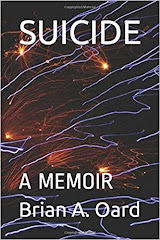Thursday, November 18, 2010
READING RILKE by William H. Gass
Reading Gass reading Rilke is a double dip of delightful. This volume is subtitled "Reflections on the Problems of Translation" (presumably to scare away any prospective readers), and while there is some consideration of the technical problems of translating Rilke into English and some comparative criticism of previous translators, and while the book culminates in Gass's own shiny brand new translation of the Duino Elegies (a rendering inferior to Stephen Mitchell's, in my view), the important thing to note is that this is no dry, academic treatise that spends pages expatiating on the proper translation of kandelaber. Most of the book consists of highly interesting and very well-written critical essays on the works of Rilke. The Elegies, the Requiem, and the "Archaic Torso" are all considered, of course, but Gass also writes of (and translates) lesser-known works, and the opening essay, "Lifeleading," is an impressive bit of critical biography. Repeatedly, I found myself disagreeing with Gass's translational ideas and agreeing with his critical ones. His analysis of the 'philosophical' side of the Elegies, for example, is one of the clearest and most compelling I've ever encountered. But his decision to translate a line in The First Elegy as "Every angel is awesome" turns Rilke's elevated diction into Dude-speak. I also quarrel with Gass's contention, thrown off in an aside, that the paintings of El Greco "contained angels worthy of the Elegies." I've seen many El Grecos, but none of his angels are either awesome or terrifying. Perhaps the most truly terrifying angel in all of Western art is Piero della Francesca's Saint Michael in the London National Gallery. Go to London and look into his eyes. Goofy red boots aside, he is a supremely inhuman badass. (And about the translation of kandelaber? Gass informs us that it was a 19th-century streetlamp with two gas-lit globes suspended from an arching bar. Shining out against the night sky, the lights would've resembled two glowing eyes in a ghostly face, a "legendary head" that "we cannot know." This specifically visual 'sense' of the image is lost in English.)
Subscribe to:
Post Comments (Atom)










No comments:
Post a Comment